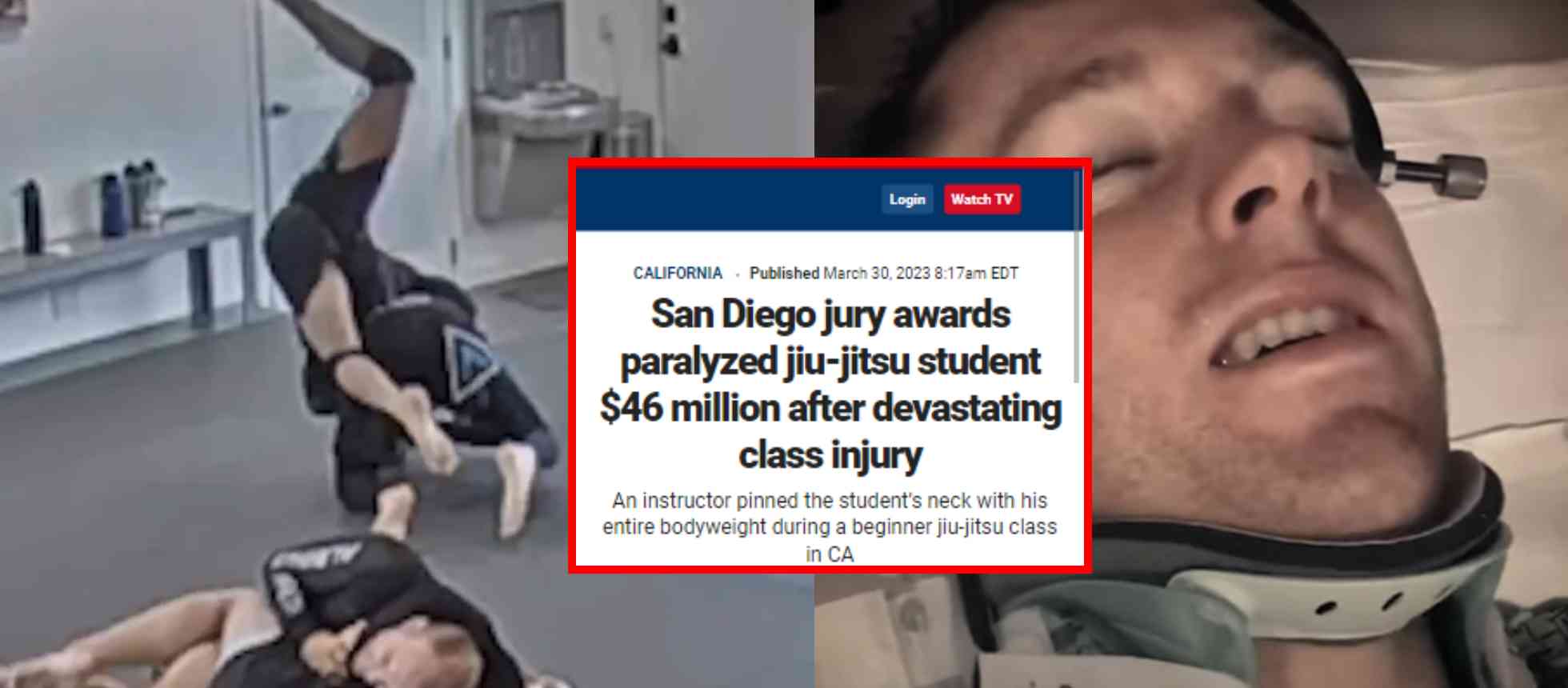Erik Magraken is a Canadian lawyer and combat sports journalist. He is the founder of Combat Sports Law. Magraken has also written for several other publications and has been interviewed by various media outlets regarding legal issues in combat sports. Additionally, he has served as a legal advisor to several combat sports organizations and athletes.
He’s been keeping a watchful eye on the case that’s been causing a tremendous controversy in the BJJ community – the case of Jack Greener.
He provided a unique take:
“$46 million. That’s how much a San Diego jury just awarded a Brazilian jiu jitsu practitioner who suffered serious injuries while training. There’s a lot of online reactions about this, but I want to talk about some of the legal issues at play here. Number one, the dollar figure that leads to headlines. It’s a lot of money. $46 million. But there’s a few things you should keep in mind.”
“This money was designed to give the plaintiff comp and sation for a lifetime of lost earnings, a lifetime of medical care, and a lifetime of pain and suffering. The injury was quadriplegia or partial quadriplegia, where the person permanently lost the function of all four of their limbs. To a certain extent. So the dollars are big because of the injury being compensated.”
“But the real thing is the plaintiff will never see that money. There is no way the plaintiff is going to see $46 million. That’s just a dollar figure of a jury wrote on a sheet of paper. But the plaintiff can’t collect what isn’t there, and there’s no way the Brazilian jiu jitsu school has that much money. There’s no way.”
“Their insurance policy has limits for that much money. What’s really going to happen is the plaintiff will get whatever the policy limits are for the defendant’s policy and then either work out a deal with the gym for a payment plan or else that gym goes bankrupt. That’s it. But the plaintiff hasn’t seen $46 million. The second thing that’s talked a lot about is whether the instructor actually was negligent.”
“If you train in jujitsu, if you watch the footage, it’s clear the instructor didn’t intend to injure the student. It was an accident in that way of looking at it. But these lawsuits are based on negligence. It just comes down to carelessness. So the question is, was it careless for the instructor to try this high rolling back take when the plaintiff’s head was in an unsafe position?”
“A jury said, yes, if you run this trial again, another jury might say no, but that’s the way the system works. Or simply talking about careless coaching. And the last thing I see people say is this is going to change everything. This is going to hurt jujitsu. What’s interesting is nobody’s saying that the fact that somebody could be paralyzed is going to hurt jujitsu.”
“They’re saying the fact that there was a lawsuit is going to hurt jujitsu. The reality is that’s not true. This lawsuit didn’t create any new precedent. It doesn’t change anything. It doesn’t change the law. The law always has been and still is. If you’re a coach, you have to take care of your students. You have to teach things in a reasonably safe way.”
“And if you don’t, you can be sued for the harm you caused here. The jury thought the coach didn’t do things safely. That’s all that this case is about. But it’s not going to undo the sport. If you’re a coach, take your students safety seriously and train smart, train safe. ”

